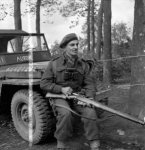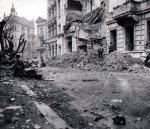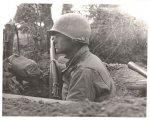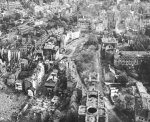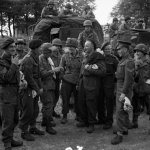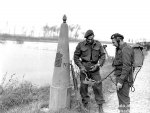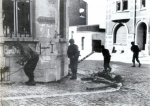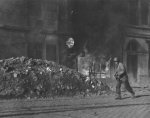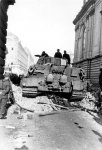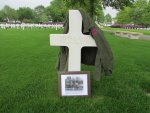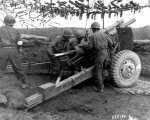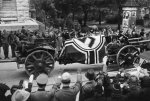October 17, 1944: It’s Tuesday - today is D+133, marking 19 weeks since the D-Day Invasion at Normandy and the beginning of the liberation of Europe.
In Aachen, 16th Infantry slows to await reinforcements, though some headway is gained as the Germans continue to fall back to the center of the city. General Collins decides that American strength in Aachen should increase in a ratio greater than the decrease in German strength, so he calls to reinforce the two battalions of the 26th Infantry with the two battalions of tanks and armored infantry of the 3d Armored Division that had been alerted to counterattack any penetration near Eilendorf but so far has not been needed. Labeled Task Force Hogan, these two units are to join the fight on the north flank of Colonel Corley’s battalion against Lousberg. The armor is also ordered to occupy the village of Laurensberg, two miles northwest of Aachen, key to that part of the West Wall which remnants of the 49th Division still hold north and northwest of the city. As an additional reinforcement, General Collins attaches to the 1st Division a battalion of the 110th Infantry, brought north from Camp d’Elsenborn in the V Corps sector where the 28th Division is holding a relatively inactive front. General Huebner wants to this battalion only in a defensive role, to cover a growing gap between Colonel Daniel’s battalion of the 26th Infantry in Aachen and the 1106th Engineers south of the city.
Troops of the British 2nd Army capture Venray in attacks toward Venlo. To the south, the US 7th Army continues its offensive around Luneville and Bruyeres.
Over Germany, US 8th Air Force attacks Cologne with 1,248 bombers (four lost) supported by 774 fighters (one lost).
On the eastern front, the Soviet offensive against German Courland pocket continues. The Soviet 3rd Belorussian Front attacks Suwalki, Tilsit, and Goldap while the Soviet 2nd Ukrainian Front attacks toward Debrecen and the Soviet 3rd Ukrainian Front and Tito's partisans assault Belgrade.
In western Italy, the US 5th Army attacking around Monte Caula, Monterumici, Lucca, Livergnano, Monte Belmonte, Monte della Vigna, Monterenzio, Monte Cuccoli, Monte Pianoreno, and Monte Ceco. US 2nd Corps (part of US 5th Army) continues attacks toward Bologna. To the east, the British 8th Army attacking toward Galeata, Acquarola, and Celincordia while the Polish 2nd Corps (as part of British 8th Army) begins attacks from south of Forli.
In Liberated France, the French Ministry of War and the National Council for the Resistance reach agreement on the process by which resistance forces, FFI, will be integrated into the regular army.
Pictured: Major Jacques Ostiguy of Le Régiment de Maisonneuve, who has just been decorated with the Distinguished Service Order, Ossendrecht, The Netherlands, October 17, 1944.; Sherman tank and M10 tank destroyer on the streets of Aaachen, October 17, 1944.; GIs from the 1st Infantry Division battle through central Aachen, October 17, 1944.; Pfc. Arlon L. Adams, 119th Inf. Reg., of Temperance, Mich. awaits German counterattacks in his foxhole in the vicinity of Bardenberg and Wurselen, Germany, October 17, 1944. Pfc. Adams was later KIA on February 24, 1945 in the Roer River assault.
